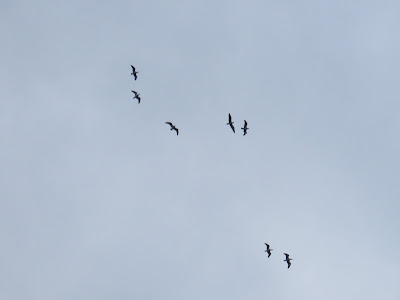A day starting cold, but rapidly warming up in the sunshine. I tale the 104 bus to Cottingham and alight in the centre of the village. I make my way to Northgate and walk west to Harland Way and then Wood Hill way. The North side of Cottingham is dotted with places with 'wood' in them: Wood Hill, Norwood, Pillwoods, Jillywoods, Platwoods. The only actual wood remaining is Birkhill Wood, which is partly a plantation. Not all is lost, as woodland trees and groundplants, at last many, survive in the hedges and lanes. As I climb Harland Way, Dog Mercury, Cuckoo Pint and Ramsons carpet the thin wooded strips by the road. My walk today is mainly to record this relict woodland flora. I can't believe that there are already flowering Bluebells on the boundary of the Golf course. A Brown Hare bounds apparently following some scent as it zigzags slowly on a ploughed field. I carry on to Burn Farm and then turn towards Jillywood lane. There I find my first patch of Wood Anemones, just on a grassy bank by a ditch. My favourite stretch is the double hedge that runs along Jillywood lane, with ramsons, greated stichtword and evidence of some coppiced hazel and ash. A Lapwing is sitting on a grassy field in the distance. I turn round as I approach the end of the lane and return by Burn Park cottages and Park Lane.
Monday, 31 March 2025
Around Jillywoods, Cottingham
Tuesday, 25 March 2025
Holderness: Patrington to Patrington Haven
I take the 8:00am X7 bus at Hull city centre, and I'm at Patrington at 9:00. It is a bright, mild day with barely a breeze. I wander around the streets of the village, recording birds and plants. Rooks are busy at their nests, a Chiffchaff sings. St Patrick's Church, 'Queen of Holderness', a Grade I listed building, looms large in the village and is a great landmark, visible for miles in this flat landscape. I make a quick stop at the Greenwich Meridian, just outside the village, on Welwick road. A flock of Fieldfare, Redwing and Starlings are feeding on a ploughed field. I take Saltmarsh lane, an unsurfaced lane, with plenty of puddles, but it has been dry lately, so I don't get too muddy. Skylarks and a Yellowhammer sing. a Kestrel lands on a pile of straw bales. I turn right onto the footpath crossing South Field, fortunately it is along farm tracks. The landscape is mostly flat and arable farmland, but there is a little rise, which means there are not as many ditches as in other areas of Holderness. Skylarks sing at both sides of the path. In front of me, there is a resting roe deer by a hedge, when it stands, I realise there are three others. I soon get to Patrington Haven, which used to have a navigable canal to the Humber, long silted up. Bees feed on Red deadnettles, including Hairy-footed flower bee males. I take a permissive path by the caravan park which leads to Enholmes Farm. I flush a Great Spotted Woodpecker. There are several linear plantations in the distance, some with rookeries. I turn right at Enholmes Farm. Woodland plants are flowering at Cherry Plantation. I'm soon back at Patrington, where I treat myself to a lunch at the cafe.
Sunday, 23 March 2025
Blackcap and Reed Bunting at Sculcoates
The deeper, more nasal calls of the returned Lesser Black-backed Gulls is all round, gathering and flying over calling together and seemingly attracting all those around, as the group increased in size.
It is a great bird chorus at Sculcoates, with at least three Chiffchaffs calling. I hear a Blackcap (number 83 for the challenge) in the wilderness across the drain, with plenty of undergrowth and ivy clad trees. Then a Reed Bunting, only the second I see in the patch, sings from the bushes by the cycle path over the drain, then flies to the reeds. Overall, 36 sp at the patch, which must be one of the highest counts.

















































